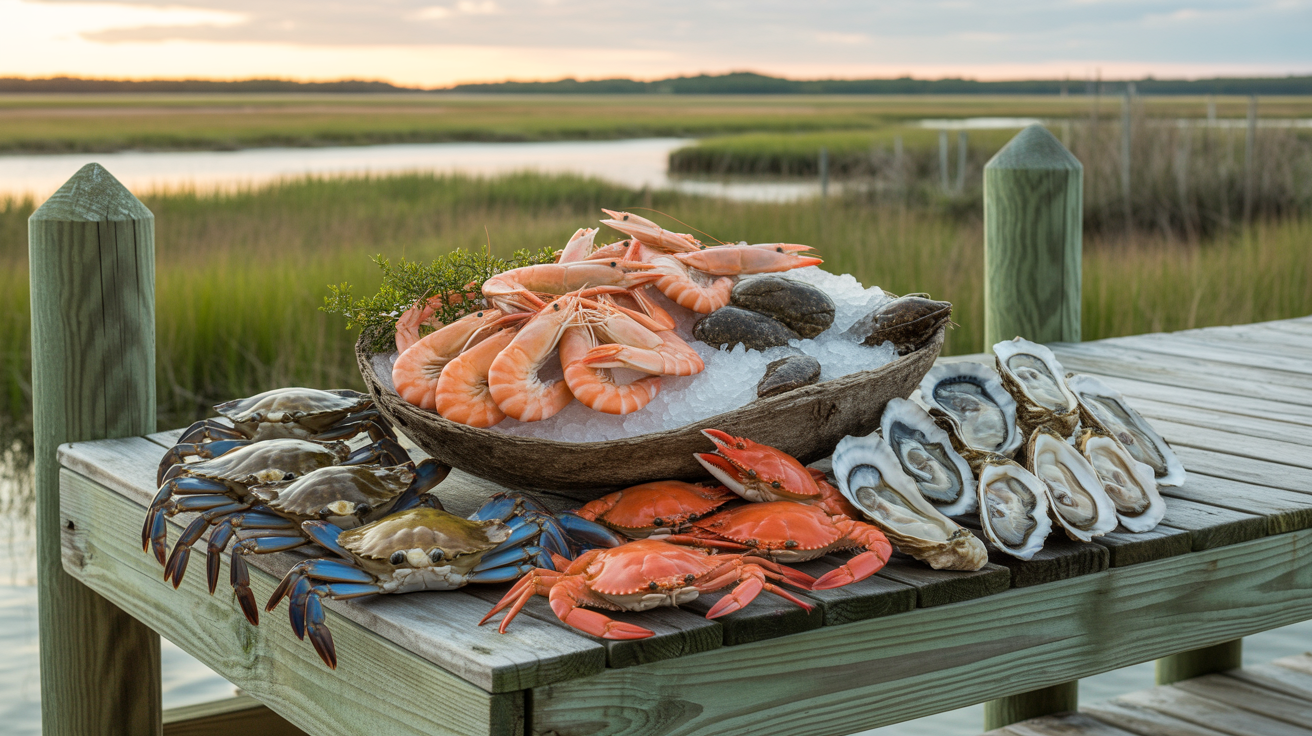Discover what distinguishes Creole from Cajun cooking in Louisiana's rich culinary landscape—from historical origins to signature dishes and cooking techniques.
Share This Recipe
Louisiana's culinary landscape is home to two of America's most distinctive and flavorful cuisines: Creole and Cajun. While often confused or used interchangeably, these traditions have distinct histories, ingredients, and techniques that make each uniquely delicious.
The Historical Roots
Understanding the difference between Creole and Cajun begins with their origins and the people who created these cuisines.
Creole: City Sophistication
Creole cuisine developed in New Orleans, Louisiana's cosmopolitan port city. The term "Creole" originally described people of European descent born in Louisiana, but the culture—and cuisine—became a melting pot of influences:
This diverse heritage created a sophisticated, refined cuisine often called the "food of the city." Creole cooking had access to imported ingredients, established markets, and the refinement that comes with urban culinary culture.
Cajun: Country Resourcefulness
Cajun cuisine emerged from the rural Acadiana region of southwestern Louisiana. The Cajuns are descendants of French Acadians expelled from Nova Scotia by the British in the 1700s. Settling in the bayous and prairies of Louisiana, they adapted their French cooking traditions to available local ingredients:
This rural cuisine is often described as "rustic," "hearty," and "country-style"—the food of people working the land and water.
Key Culinary Differences
While both cuisines share some ingredients and techniques, several distinctions define each tradition:
Tomatoes: The Tell-Tale Ingredient
Creole: Often includes tomatoes in dishes. The saying goes, "Creole cuisine is red (tomatoes), Cajun is brown (roux)."
Cajun: Traditionally avoids tomatoes, relying on deep, dark roux for color and flavor.
Holy Trinity vs. Mirepoix
Both cuisines use a base of aromatic vegetables, but with distinctions:
Creole "Holy Trinity Plus":
Cajun "Holy Trinity":
Cooking Methods
Creole:
Cajun:
Seasoning Profiles
Creole:
Cajun:
Signature Dishes: A Comparison
Let's explore the signature dishes that exemplify each tradition:
Gumbo
Creole Gumbo:
Cajun Gumbo:
Jambalaya
Creole Jambalaya ("Red Jambalaya"):
Cajun Jambalaya ("Brown Jambalaya"):
Other Distinctive Dishes
Creole Specialties:
Cajun Specialties:
The Great Étouffée Debate
Étouffée (meaning "smothered") exists in both traditions but with notable differences:
Creole Étouffée:
Cajun Étouffée:
Both are served over rice and are absolutely delicious—just different expressions of the same concept.
Making Roux: The Foundation
Roux (pronounced "roo") is the foundation of both cuisines, but the approach differs:
Creole Roux:
Cajun Roux:
How to Make Perfect Cajun Roux:
1. Use equal parts oil and flour (1 cup each is standard)
2. Heat oil in a heavy pot over medium heat
3. Add flour all at once, whisking constantly
4. Stir continuously to prevent burning
5. Cook until desired color (blonde: 15 min, medium: 30 min, dark: 45-60 min)
6. Remove from heat when it reaches one shade lighter than desired (it continues cooking)
Safety tip: Never walk away from roux. Dark roux is extremely hot and can cause severe burns. Keep a lid nearby to smother any flames if it ignites.
Ingredient Accessibility
Creole cuisine developed with access to:
Cajun cuisine relied on:
This explains why Creole dishes often seem more complex and refined, while Cajun dishes emphasize bold, straightforward flavors and rustic presentations.
Modern Blending
Today, the lines between Creole and Cajun have blurred considerably. Many New Orleans restaurants offer both styles, chefs cross-pollinate techniques, and home cooks create fusion dishes drawing from both traditions.
This evolution is natural and delicious. Modern "Louisiana cuisine" often represents the best of both worlds—Creole refinement meeting Cajun boldness.
Cooking Louisiana Cuisine at Home
Ready to explore these flavors in your own kitchen? Start with these approaches:
For Creole cooking:
1. Invest in good fish stock or shrimp stock
2. Keep tomato paste and diced tomatoes on hand
3. Use butter liberally
4. Don't rush—layered flavors take time
5. Finish dishes with fresh herbs
For Cajun cooking:
1. Master the art of dark roux
2. Build your spice tolerance gradually
3. Buy or make andouille sausage (it's worth it)
4. Use cast iron cookware
5. Embrace one-pot cooking methods
Essential ingredients for both:
Which Cuisine is "Better"?
This question misses the point. Both cuisines are extraordinary expressions of Louisiana's rich cultural heritage. The "better" cuisine is simply the one you're eating at the moment.
Choose Creole when you want:
Choose Cajun when you want:
Or better yet, embrace both and explore the full spectrum of Louisiana's culinary treasures.
Bringing Louisiana Home
You don't need to live in Louisiana to enjoy authentic Creole and Cajun cooking. These cuisines welcome home cooks with their straightforward techniques and big, forgiving flavors.
Start with a classic recipe from each tradition—perhaps Chicken and Sausage Gumbo (Cajun) and Shrimp Creole. Notice the differences in technique, flavor profiles, and presentations. Then experiment, adapt, and make these traditions your own.
Have you tried both Creole and Cajun cooking? What are your favorite dishes from each tradition? Share your Louisiana cuisine experiences in the comments!
*Looking to try your hand at authentic Louisiana cooking? Check out our Chicken and Sausage Gumbo recipe to experience Cajun flavors at their finest.*
Affiliate Disclosure: As an Amazon Associate, we earn from qualifying purchases.
Never Miss a Recipe!
Join 10,000+ Southern food lovers getting our weekly newsletter with new recipes, cooking tips, and exclusive content delivered straight to your inbox.
Subscribe Now
